
Python Data Analysis Cookbook
¥90.46
Over 140 practical recipes to help you make sense of your data with ease and build production-ready data apps About This Book Analyze Big Data sets, create attractive visualizations, and manipulate and process various data types Packed with rich recipes to help you learn and explore amazing algorithms for statistics and machine learning Authored by Ivan Idris, expert in python programming and proud author of eight highly reviewed books Who This Book Is For This book teaches Python data analysis at an intermediate level with the goal of transforming you from journeyman to master. Basic Python and data analysis skills and affinity are assumed. What You Will Learn Set up reproducible data analysis Clean and transform data Apply advanced statistical analysis Create attractive data visualizations Web scrape and work with databases, Hadoop, and Spark Analyze images and time series data Mine text and analyze social networks Use machine learning and evaluate the results Take advantage of parallelism and concurrency In Detail Data analysis is a rapidly evolving field and Python is a multi-paradigm programming language suitable for object-oriented application development and functional design patterns. As Python offers a range of tools and libraries for all purposes, it has slowly evolved as the primary language for data science, including topics on: data analysis, visualization, and machine learning. Python Data Analysis Cookbook focuses on reproducibility and creating production-ready systems. You will start with recipes that set the foundation for data analysis with libraries such as matplotlib, NumPy, and pandas. You will learn to create visualizations by choosing color maps and palettes then dive into statistical data analysis using distribution algorithms and correlations. You’ll then help you find your way around different data and numerical problems, get to grips with Spark and HDFS, and then set up migration *s for web mining. In this book, you will dive deeper into recipes on spectral analysis, smoothing, and bootstrapping methods. Moving on, you will learn to rank stocks and check market efficiency, then work with metrics and clusters. You will achieve parallelism to improve system performance by using multiple threads and speeding up your code. By the end of the book, you will be capable of handling various data analysis techniques in Python and devising solutions for problem scenarios. Style and Approach The book is written in “cookbook” style striving for high realism in data analysis. Through the recipe-based format, you can read each recipe separately as required and immediately apply the knowledge gained.
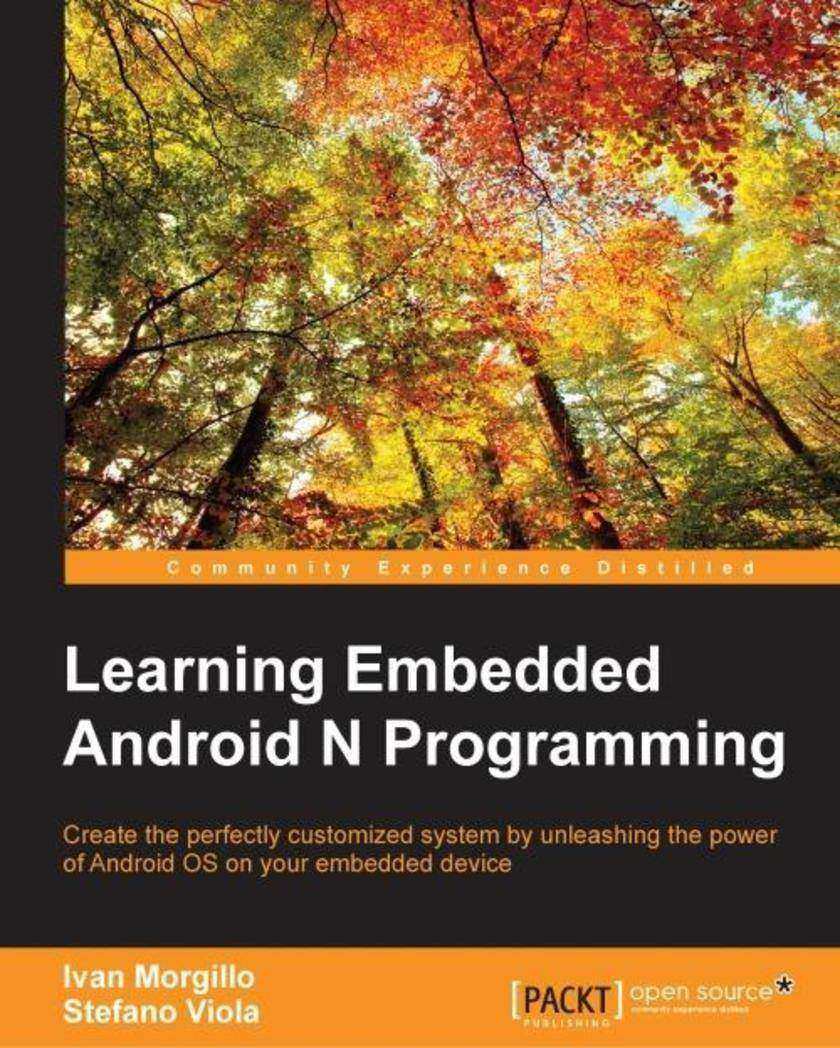
Learning Embedded Android N Programming
¥80.65
Create the perfectly customized system by unleashing the power of Android OS on your embedded device About This Book Understand the system architecture and how the source code is organized Explore the power of Android and customize the build system Build a fully customized Android version as per your requirements Who This Book Is For If you are a Java programmer who wants to customize, build, and deploy your own Android version using embedded programming, then this book is for you. What You Will Learn Master Android architecture and system design Obtain source code and understand the modular organization Customize and build your first system image for the Android emulator Level up and build your own Android system for a real-world device Use Android as a home automation and entertainment system Tailor your system with optimizations and add-ons Reach for the stars: look at the Internet of Things, entertainment, and domotics In Detail Take a deep dive into the Android build system and its customization with Learning Embedded Android Programming, written to help you master the steep learning curve of working with embedded Android. Start by exploring the basics of Android OS, discover Google’s “repo” system, and discover how to retrieve AOSP source code. You'll then find out to set up the build environment and the first AOSP system. Next, learn how to customize the boot sequence with a new animation, and use an Android “kitchen” to “cook” your custom ROM. By the end of the book, you'll be able to build customized Android open source projects by developing your own set of features. Style and approach This step-by-step guide is packed with various real-world examples to help you create a fully customized Android system with the most useful features available.
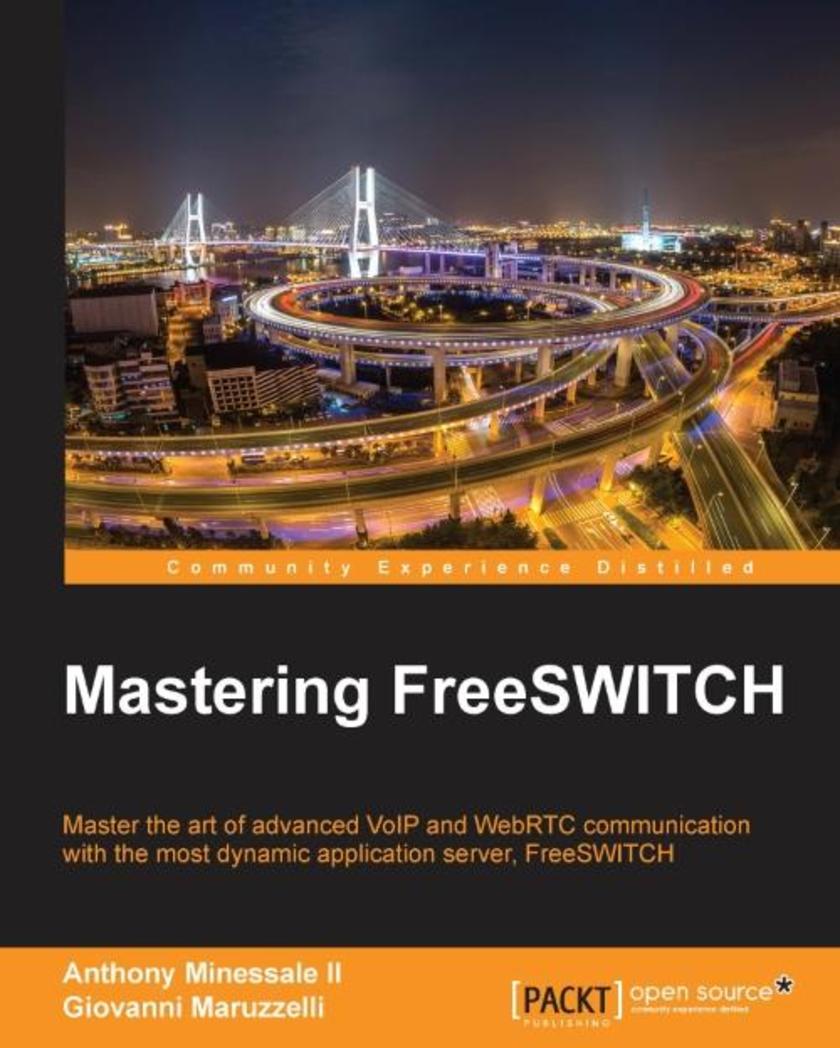
Mastering FreeSWITCH
¥80.65
Master the art of advanced VoIP and WebRTC communication with the most dynamic application server, FreeSWITCH About This Book Forget the hassle - make FreeSWITCH work for you Discover how FreeSWITCH integrates with a range of tools and APIs From high availability to IVR development use this book to become more confident with this useful communication software Who This Book Is For SysAdmins, VoIP engineers – whoever you are, whatever you’re trying to do, this book will help you get more from FreeSWITCH. What You Will Learn Get to grips with the core concepts of FreeSWITCH Learn FreeSWITCH high availability Work with SIP profiles, gateways, ITSPs, and Codecs optimization Implement effective security on your projects Master audio manipulation and recording Discover how FreeSWITCH works alongside WebRTC Build your own complex IVR and PBX applications Connect directly to PSTN/TDM Create your own FreeSWITCH module Trace SIP packets with the help of best open source tools Implement Homer Sipcapture to troubleshoot and debug all your platform traffic In Detail FreeSWITCH is one of the best tools around if you’re looking for a modern method of managing communication protocols through a range of different media. From real-time browser communication with the WebRTC API to implementing VoIP (voice over internet protocol), with FreeSWITCH you’re in full control of your projects. This book shows you how to unlock its full potential – more than just a tutorial, it’s packed with plenty of tips and tricks to make it work for you. Written by members of the team who actually helped build FreeSWITCH, it will guide you through some of the newest features of version 1.6 including video transcoding and conferencing. Find out how FreeSWITCH interacts with other tools and APIs, learn how to tackle common (and not so common) challenges ranging from high availability to IVR development and programming advanced PBXs. Great communication functionality begins with FreeSWITCH – find out how and get your project up and running today. Style and approach Find out how it works, then put your knowledge into practice - that's how this advanced FreeSWITCH guide has been designed to help you learn. You'll soon master FreeSWITCH and be confident using it in your projects.
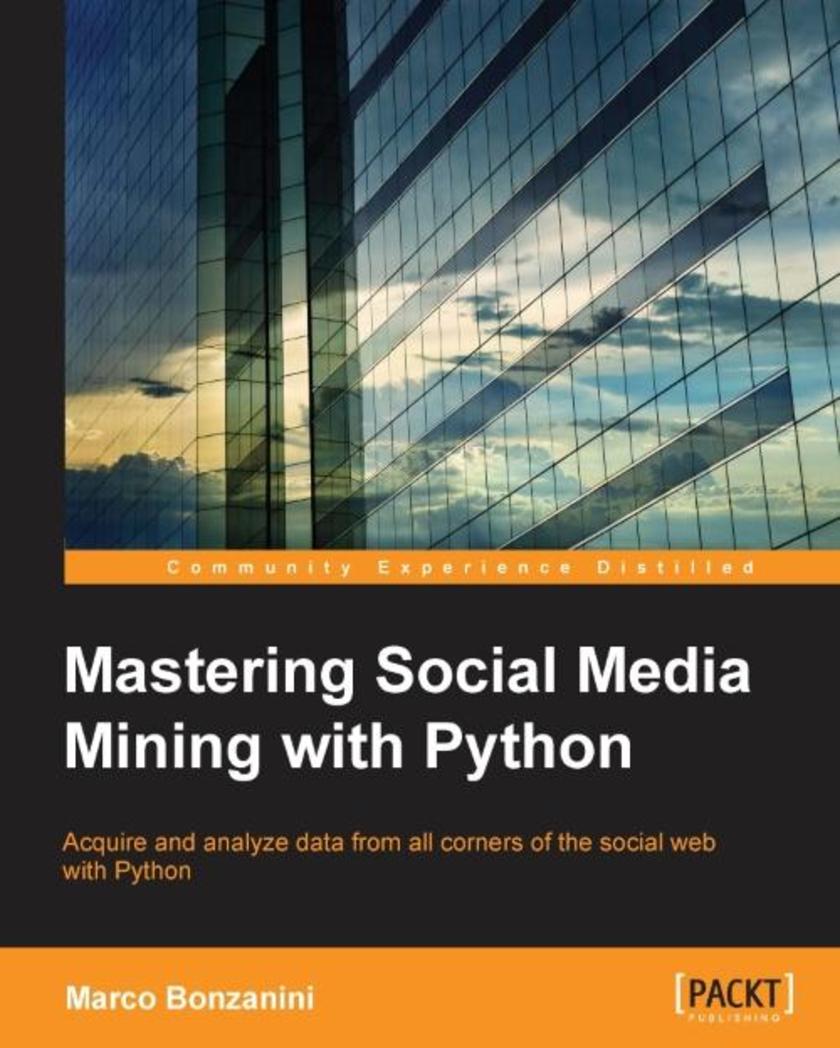
Mastering Social Media Mining with Python
¥80.65
Acquire and analyze data from all corners of the social web with Python About This Book Make sense of highly unstructured social media data with the help of the insightful use cases provided in this guide Use this easy-to-follow, step-by-step guide to apply analytics to complicated and messy social data This is your one-stop solution to fetching, storing, analyzing, and visualizing social media data Who This Book Is For This book is for intermediate Python developers who want to engage with the use of public APIs to collect data from social media platforms and perform statistical analysis in order to produce useful insights from data. The book assumes a basic understanding of the Python Standard Library and provides practical examples to guide you toward the creation of your data analysis project based on social data. What You Will Learn Interact with a social media platform via their public API with Python Store social data in a convenient format for data analysis Slice and dice social data using Python tools for data science Apply text analytics techniques to understand what people are talking about on social media Apply advanced statistical and analytical techniques to produce useful insights from data Build beautiful visualizations with web technologies to explore data and present data products In Detail Your social media is filled with a wealth of hidden data – unlock it with the power of Python. Transform your understanding of your clients and customers when you use Python to solve the problems of understanding consumer behavior and turning raw data into actionable customer insights. This book will help you acquire and analyze data from leading social media sites. It will show you how to employ scientific Python tools to mine popular social websites such as Facebook, Twitter, Quora, and more. Explore the Python libraries used for social media mining, and get the tips, tricks, and insider insight you need to make the most of them. Discover how to develop data mining tools that use a social media API, and how to create your own data analysis projects using Python for clear insight from your social data. Style and approach This practical, hands-on guide will help you learn everything you need to perform data mining for social media. Throughout the book, we take an example-oriented approach to use Python for data analysis and provide useful tips and tricks that you can use in day-to-day tasks.
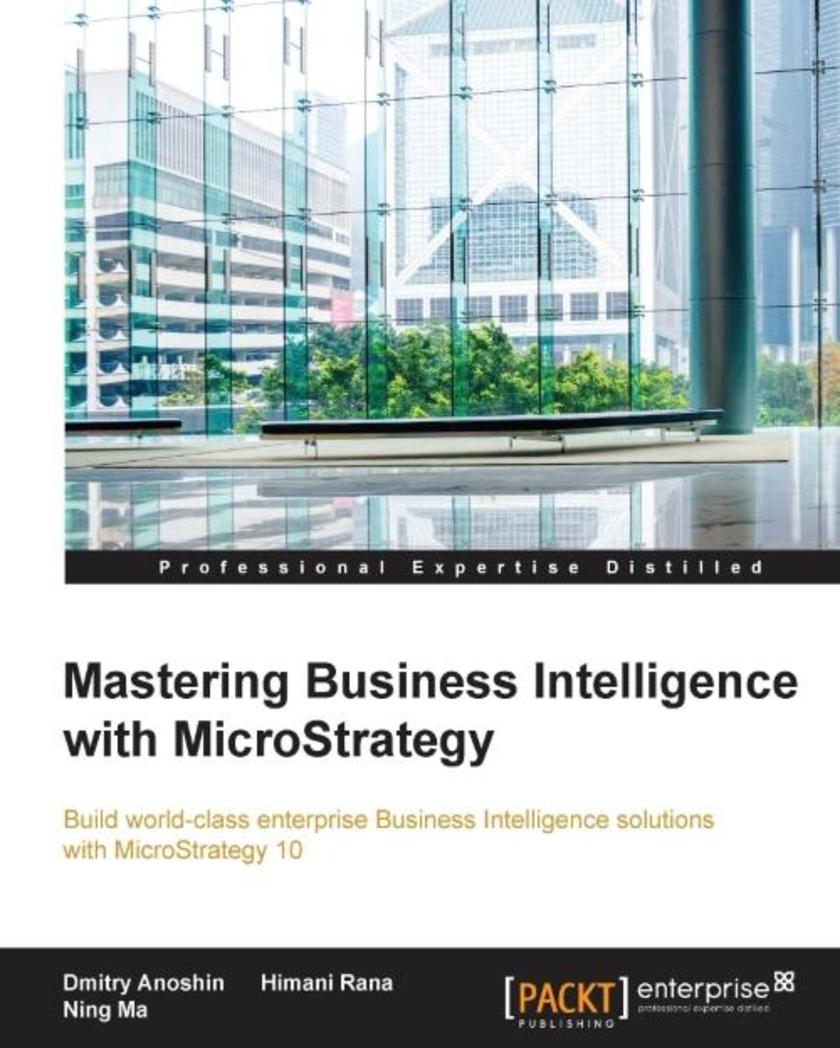
Mastering Business Intelligence with MicroStrategy
¥107.90
Build world-class enterprise Business Intelligence solutions with MicroStrategy 10 About This Book Fix the gap between BI tools and implementation/integration processes with big data and predictive analytics using this comprehensive guide to MicroStrategy 10 Highly practical, example-rich guide that lets you implement business intelligence with MicroStrategy 10 in your organization Create the best user experience with BI dashboards using MicroStrategy using this up-to-date, comprehensive guide Who This Book Is For This book is intended for BI, DWH, ETL developers, BI/DWH/Analytics managers, analysts, and business users who already have MicroStrategy in their organization and want to take it to the next level in order to increase performance and improve user experience. In addition, it helps the reader to migrate from MicroStrategy 9 to MicroStrategy 10 and to start using the new capabilities. What You Will Learn Explore various visualization techniques for presenting analyzed data Customize MicroStrategy in order to meet your business requirements Develop and design mobile dashboards Use the advanced techniques such as designing reports, documents and interactive dashboards for building dashboards Understand the concepts of data discovery and Desktop capabilities Explore the best practices for Microstrategy system administration Find and fix issues based on connections, environment or documents Integrate third party ESRI map tools with MicroStrategy to create geo based reports In Detail Business intelligence is becoming more important by the day, with cloud offerings and mobile devices gaining wider acceptance and achieving better market penetration. MicroStrategy Reporting Suite is an absolute leader in the BI market and offers rich capabilities from basic data visualizations to predictive analytics. It lets you various delivery methods such as the Web, desktops, and mobiles. Using real-world BI scenarios, this book helps you to implement Business Analytics solutions in big e-commerce companies. It kicks off with MicroStrategy 10 features and then covers schema design models and techniques. Building upon your existing knowledge, the book will teach you advanced techniques for building documents and dashboards. It further teaches various graphical techniques for presenting data for analysis using maps, graphs, and advanced charts. Although MicroStrategy has rich functionality, the book will show how to customize it in order to meet your business requirements. You will also become familiar with the native analytical functions that will help you to maximize the impact of BI solutions with powerful predictive analytics. Furthermore, the book will focus on MicroStrategy Mobile Analytics along with data discovery and desktop capabilities such as connecting various data sources and building interactive dashboards. The book will also uncover best practices, troubleshooting techniques for MicroStrategy system administration, and also security and authentication techniques. Lastly, you will learn to use Hadoop for MicroStrategy reporting. By the end of the book, you will become proficient in evaluating any BI software in order to choose the best one that meets all business requirements. Style and approach This book will be focusing on providing extensive guide to plan how to design and develop complex BI architecture for real world scenario, using Microstrategy 10, best practices and collected experience working with BI, predictive analytics, and Microstrategy and big data.
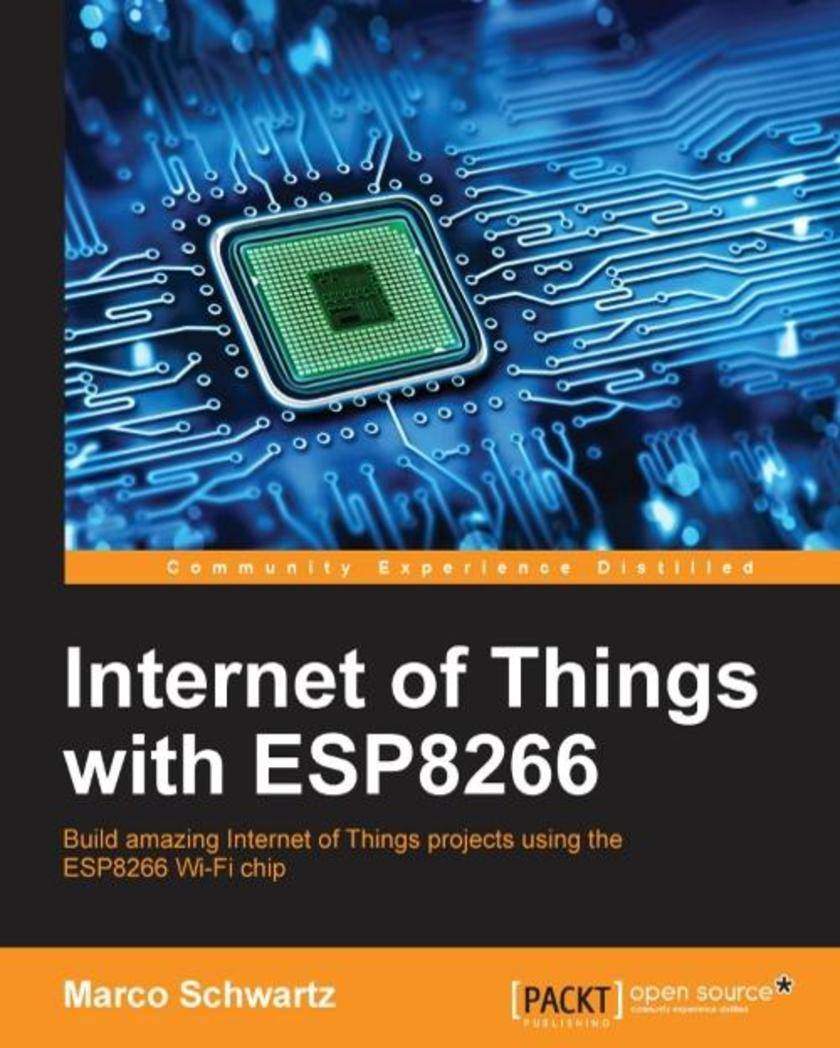
Internet of Things with ESP8266
¥71.93
Build amazing Internet of Things projects using the ESP8266 Wi-Fi chip About This Book Get to know the powerful and low cost ESP8266 and build interesting projects in the field of Internet of Things Configure your ESP8266 to the cloud and explore the networkable modules that will be utilized in the IoT projects This step-by-step guide teaches you the basics of IoT with ESP8266 and makes your life easier Who This Book Is For This book is for those who want to build powerful and inexpensive IoT projects using the ESP8266 WiFi chip, including those who are new to IoT, or those who already have experience with other platforms such as Arduino. What You Will Learn Control various devices from the cloud Interact with web services, such as Twitter or Facebook Make two ESP8266 boards communicate with each other via the cloud Send notifications to users of the ESP8266, via email, text message, or push notifications Build a physical device that indicates the current price of Bitcoin Build a simple home automation system that can be controlled from the cloud Create your own cloud platform to control ESP8266 devices In Detail The Internet of Things (IoT) is the network of objects such as physical things embedded with electronics, software, sensors, and connectivity, enabling data exchange. ESP8266 is a low cost WiFi microcontroller chip that has the ability to empower IoT and helps the exchange of information among various connected objects. ESP8266 consists of networkable microcontroller modules, and with this low cost chip, IoT is booming. This book will help deepen your knowledge of the ESP8266 WiFi chip platform and get you building exciting projects. Kick-starting with an introduction to the ESP8266 chip, we will demonstrate how to build a simple LED using the ESP8266. You will then learn how to read, send, and monitor data from the cloud. Next, you’ll see how to control your devices remotely from anywhere in the world. Furthermore, you’ll get to know how to use the ESP8266 to interact with web services such as Twitter and Facebook. In order to make several ESP8266s interact and exchange data without the need for human intervention, you will be introduced to the concept of machine-to-machine communication. The latter part of the book focuses more on projects, including a door lock controlled from the cloud, building a physical Bitcoin ticker, and doing wireless gardening. You’ll learn how to build a cloud-based ESP8266 home automation system and a cloud-controlled ESP8266 robot. Finally, you’ll discover how to build your own cloud platform to control ESP8266 devices. With this book, you will be able to create and program Internet of Things projects using the ESP8266 WiFi chip. Style and approach This is a step-by-step guide that provides great IOT projects with ESP8266. All the key concepts are explained details with the help of examples and demonstrations of the projects.

Modern JavaScript Applications
¥90.46
An example-driven guide that explores the world of modern web development with JavaScript About This Book Explore the new features of ECMAScript 6 and how they can be incorporated to build cutting edge web applications Learn about modern web architectures and build real-world apps on top of them Make use of modern JavaScript tools, techniques and frameworks to enhance your web development skills Who This Book Is For This book is for existing JavaScript developers who want to explore some of the modern JavaScript features, techniques, and architectures to develop cutting edge web applications. What You Will Learn Learn to create single page websites Gain expertise in responsive and dynamic website design Enable Real-time communications between client-client and client-server/server-client Create APIs for large-scale applications Write complete applications using functional reactive programming In Detail Over the years, JavaScript has taken significant strides in the world of modern web development to enhance the development of a wide range of applications with different architectures. This book explores the advanced and new features that have arrived in JavaScript and how they can be applied to develop high-quality applications with different architectures. The book begins by covering a single page application that builds on the innovative MVC approach using AngularJS. As we move forward, the book shows you how to develop an enterprise-level application with the microservices architecture, using Node to build web services. We then focus on network programming concepts and you’ll build a real-time web application with websockets. When you’ve gained a solid grip on the different architectures, we’ll move on to the area where JavaScript shines, that is, UI development. You’ll learn to build responsive, declarative UIs with React and Bootstrap. As we near the end of this book, you’ll see how the performance of web applications can be enhanced using Functional Reactive Programming (FRP). Along the way, the book also explores how the power of JavaScript can be increased multi-fold. After reading this book, you will have a solid knowledge of the latest JavaScript techniques, tools, and architecture to build modern web apps. Style and approach Covering all the new features in ECMAScript 6, this book takes a project-based approach to introduce you to all the latest techniques, tools, and architectures of JavaScript web development. Each project that the book builds will show you a different angle of the power of JavaScript in modern web development.
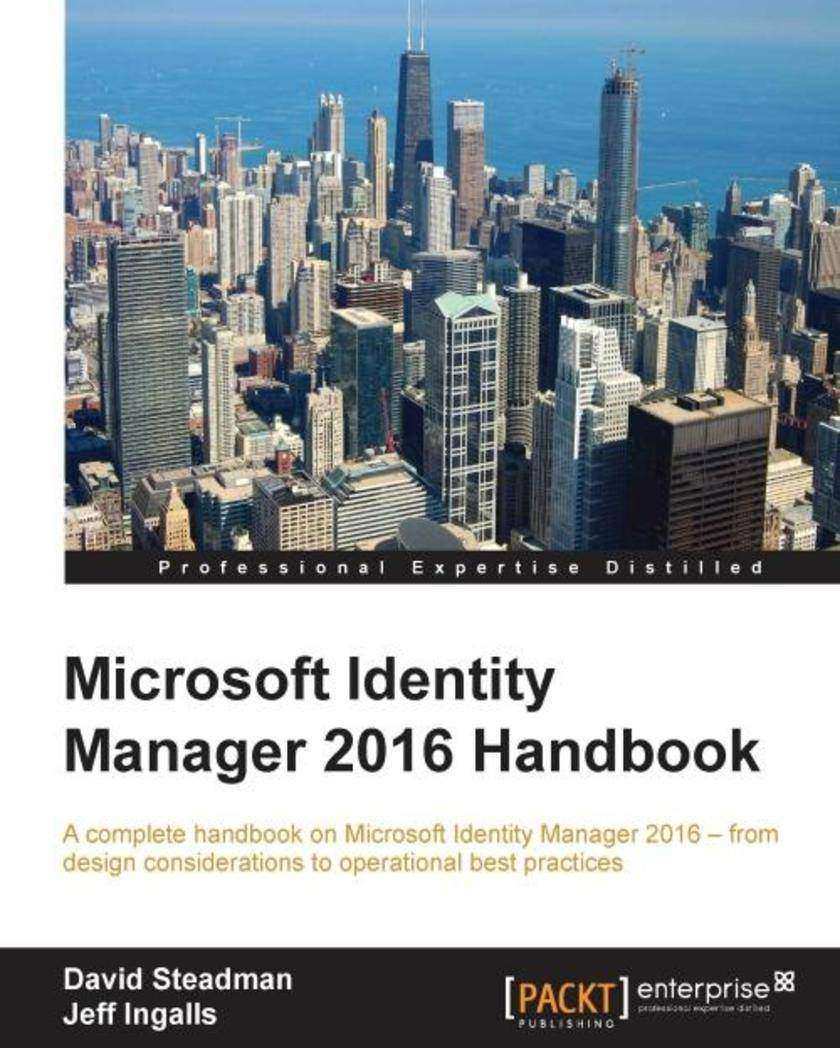
Microsoft Identity Manager 2016 Handbook
¥107.90
A complete handbook on Microsoft Identity Manager 2016 – from design considerations to operational best practices About This Book Get to grips with the basics of identity management and get acquainted with the MIM components and functionalities Discover the newly-introduced product features and how they can help your organization A step-by-step guide to enhance your foundational skills in using Microsoft Identity Manager from those who have taught and supported large and small enterprise customers Who This Book Is For If you are an architect or a developer who wants to deploy, manage, and operate Microsoft Identity Manager 2016, then this book is for you. This book will also help the technical decision makers who want to improve their knowledge of Microsoft Identity Manager 2016. A basic understanding of Microsoft-based infrastructure using Active Directory is expected. Identity management beginners and experts alike will be able to apply the examples and scenarios to solve real-world customer problems. What You Will Learn Install MIM components Find out about the MIM synchronization, its configuration settings, and advantages Get to grips with the MIM service capabilities and develop custom activities Use the MIM Portal to provision and manage an account Mitigate access escalation and lateral movement risks using privileged access management Configure client certificate management and its detailed permission model Troubleshoot MIM components by enabling logging and reviewing logs Back up and restore the MIM 2015 configuration Discover more about periodic purging and the coding best practices In Detail Microsoft Identity Manager 2016 is Microsoft’s solution to identity management. When fully installed, the product utilizes SQL, SharePoint, IIS, web services, the .NET Framework, and SCSM to name a few, allowing it to be customized to meet nearly every business requirement. The book is divided into 15 chapters and begins with an overview of the product, what it does, and what it does not do. To better understand the concepts in MIM, we introduce a fictitious company and their problems and goals, then build an identity solutions to fit those goals. Over the course of this book, we cover topics such as MIM installation and configuration, user and group management options, self-service solutions, role-based access control, reducing security threats, and finally operational troubleshooting and best practices. By the end of this book, you will have gained the necessary skills to deploy, manage and operate Microsoft Identity Manager 2016 to meet your business requirements and solve real-world customer problems. Style and approach The concepts in the book are explained and illustrated with the help of screenshots as much as possible. We strive for readability and provide you with step-by-step instructions on the installation, configuration, and operation of the product. Throughout the book, you will be provided on-the-field knowledge that you won’t get from whitepapers and help files.
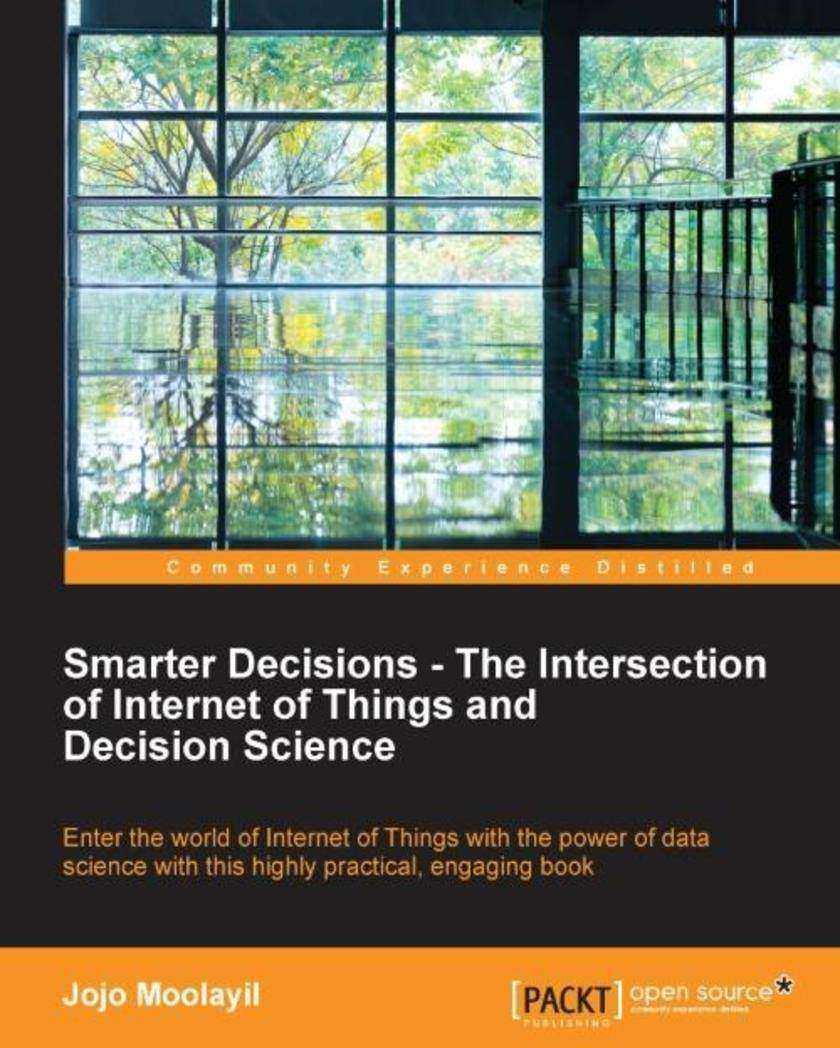
Smarter Decisions – The Intersection of Internet of Things and Decision Science
¥80.65
Enter the world of Internet of Things with the power of data science with this highly practical, engaging book About This Book Explore real-world use cases from the Internet of Things (IoT) domain using decision science with this easy-to-follow, practical book Learn to make smarter decisions on top of your IoT solutions so that your IoT is smart in a real sense This highly practical, example-rich guide fills the gap between your knowledge of data science and IoT Who This Book Is For If you have a basic programming experience with R and want to solve business use cases in IoT using decision science then this book is for you. Even if your're a non-technical manager anchoring IoT projects, you can skip the code and still benefit from the book. What You Will Learn Explore decision science with respect to IoT Get to know the end to end analytics stack – De*ive + Inquisitive + Predictive + Pre*ive Solve problems in IoT connected assets and connected operations Design and solve real-life IoT business use cases using cutting edge machine learning techniques Synthesize and assimilate results to form the perfect story for a business Master the art of problem solving when IoT meets decision science using a variety of statistical and machine learning techniques along with hands on tasks in R In Detail With an increasing number of devices getting connected to the Internet, massive amounts of data are being generated that can be used for analysis. This book helps you to understand Internet of Things in depth and decision science, and solve business use cases. With IoT, the frequency and impact of the problem is huge. Addressing a problem with such a huge impact requires a very structured approach. The entire journey of addressing the problem by defining it, designing the solution, and executing it using decision science is articulated in this book through engaging and easy-to-understand business use cases. You will get a detailed understanding of IoT, decision science, and the art of solving a business problem in IoT through decision science. By the end of this book, you’ll have an understanding of the complex aspects of decision making in IoT and will be able to take that knowledge with you onto whatever project calls for it Style and approach This scenario-based tutorial approaches the topic systematically, allowing you to build upon what you learned in previous chapters.
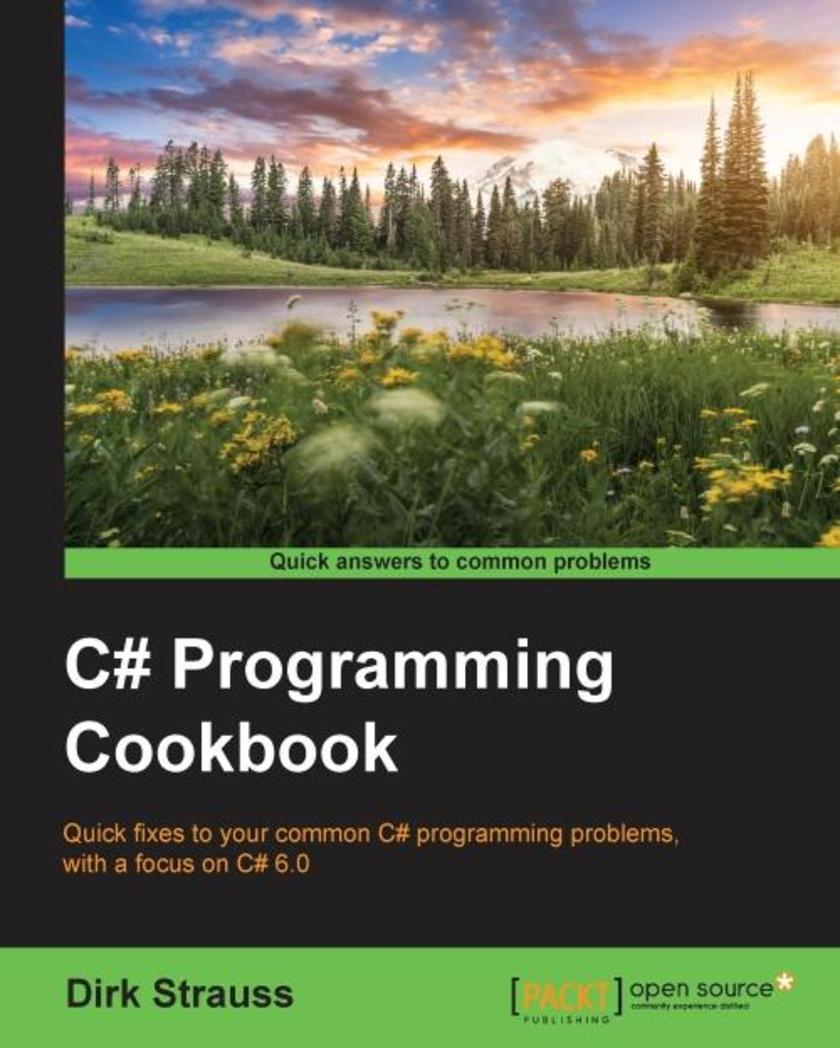
C# Programming Cookbook
¥90.46
Quick fixes to your common C# programming problems, with a focus on C# 6.0 About This Book Unique recipes for C#, that places it in its real-world context. You will be able to get yourself out of any coding-corner youve backed yourself into. All code samples available through GitHub to bring C#. In line with modern development workflows, written to the latest specification of C# 6.0. Who This Book Is For The book is aimed at developers who have basic familiarity with C# programming and will know the VS 2015 environment. What You Will Learn Write better and less code to achieve the same result as in previous versions of C#. Generate tests from the Code Contracts for mission critical methods. Integrate code in Visual Studio with GitHub. Create a web application in Azure. Design and build a microservice architecture Demystify the Rx library using Reactive extensions Write high performing codes in C# and understanding multi-threading. Security and Debugging. Implement Code Contracts on code in Visual Studio. In Detail During your application development workflow, there is always a moment when you need to get out of a tight spot. Through a recipe-based approach, this book will help you overcome common programming problems and get your applications ready to face the modern world. We start with C# 6, giving you hands-on experience with the new language features. Next, we work through the tasks that you perform on a daily basis such as working with strings, generics, and lots more. Gradually, we move on to more advanced topics such as the concept of object-oriented programming, asynchronous programming, reactive extensions, and code contracts. You will learn responsive high performance programming in C# and how to create applications with Azure. Next, we will review the choices available when choosing a source control solution. At the end of the book, we will show you how to create secure and robust code, and will help you ramp up your skills when using the new version of C# 6 and Visual Studio Style and Approach Unique recipe-based guide that will help you gain a solid understanding of the new concepts in C# 6 and Visual Studio Enterprise 2015 in a concise and technically correct manner.

Spring MVC: Beginner's Guide - Second Edition
¥80.65
Unleash the power of the latest Spring MVC 4.x to develop a complete application About This Book Work through carefully crafted exercises with detailed explanations for each step will help you understand the concepts with ease You will gain a clear understanding of the end-to-end request/response life cycle, and each logical component’s responsibility This book is packed with tips and tricks that demonstrate industry best practices on developing a Spring-MVC-based application Who This Book Is For The book is for Java developers who want to exploit Spring MVC and its features to build web applications. Some familiarity with basic servlet programming concepts would be a plus, but is not a prerequisite. What You Will Learn Familiarize yourself with the anatomy of the Spring 4.X development environment Understand web application architecture and the Spring MVC request flow Integrate bean validation and custom validation Use error handling and exception resolving Get to grips with REST-based web service development and Ajax Test your web application In Detail Spring MVC helps you build flexible and loosely coupled web applications. The Spring MVC Framework is architected and designed in such a way that every piece of logic and functionality is highly configurable. Also, Spring can integrate effortlessly with other popular web frameworks such as Struts, WebWork, Java Server Faces, and Tapestry. The book progressively teaches you to configure the Spring development environment, architecture, controllers, libraries, and more before moving on to developing a full web application. It begins with an introduction to the Spring development environment and architecture so you're familiar with the know-hows. From here, we move on to controllers, views, validations, Spring Tag libraries, and more. Finally, we integrate it all together to develop a web application. You'll also get to grips with testing applications for reliability. Style and approach This book takes a pragmatic step-by-step approach to web application development using Spring MVC, with informative screenshots and concise explanation.
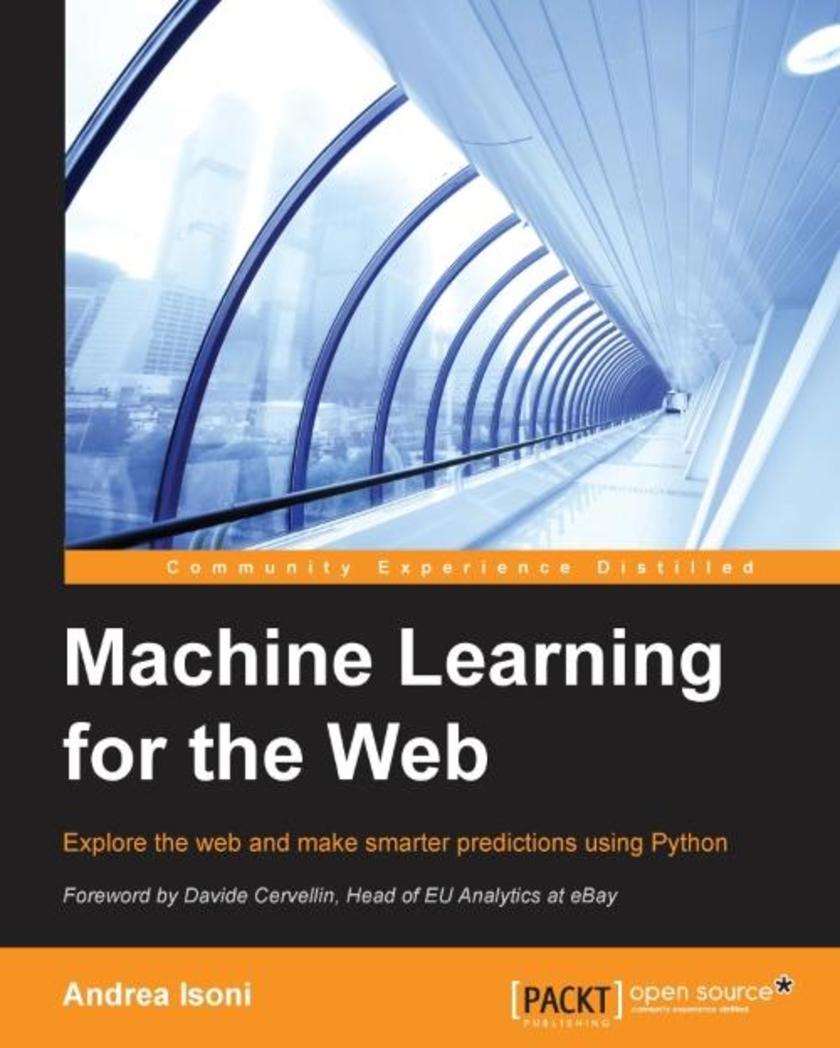
Machine Learning for the Web
¥90.46
Explore the web and make smarter predictions using Python About This Book Targets two big and prominent markets where sophisticated web apps are of need and importance. Practical examples of building machine learning web application, which are easy to follow and replicate. A comprehensive tutorial on Python libraries and frameworks to get you up and started. Who This Book Is For The book is aimed at upcoming and new data scientists who have little experience with machine learning or users who are interested in and are working on developing smart (predictive) web applications. Knowledge of Django would be beneficial. The reader is expected to have a background in Python programming and good knowledge of statistics. What You Will Learn Get familiar with the fundamental concepts and some of the jargons used in the machine learning community Use tools and techniques to mine data from websites Grasp the core concepts of Django framework Get to know the most useful clustering and classification techniques and implement them in Python Acquire all the necessary knowledge to build a web application with Django Successfully build and deploy a movie recommendation system application using the Django framework in Python In Detail Python is a general purpose and also a comparatively easy to learn programming language. Hence it is the language of choice for data scientists to prototype, visualize, and run data analyses on small and medium-sized data sets. This is a unique book that helps bridge the gap between machine learning and web development. It focuses on the difficulties of implementing predictive analytics in web applications. We focus on the Python language, frameworks, tools, and libraries, showing you how to build a machine learning system. You will explore the core machine learning concepts and then develop and deploy the data into a web application using the Django framework. You will also learn to carry out web, document, and server mining tasks, and build recommendation engines. Later, you will explore Python’s impressive Django framework and will find out how to build a modern simple web app with machine learning features. Style and approach Instead of being overwhelmed with multiple concepts at once, this book provides a step-by-step approach that will guide you through one topic at a time. An intuitive step-by step guide that will focus on one key topic at a time. Building upon the acquired knowledge in each chapter, we will connect the fundamental theory and practical tips by illustrative visualizations and hands-on code examples.
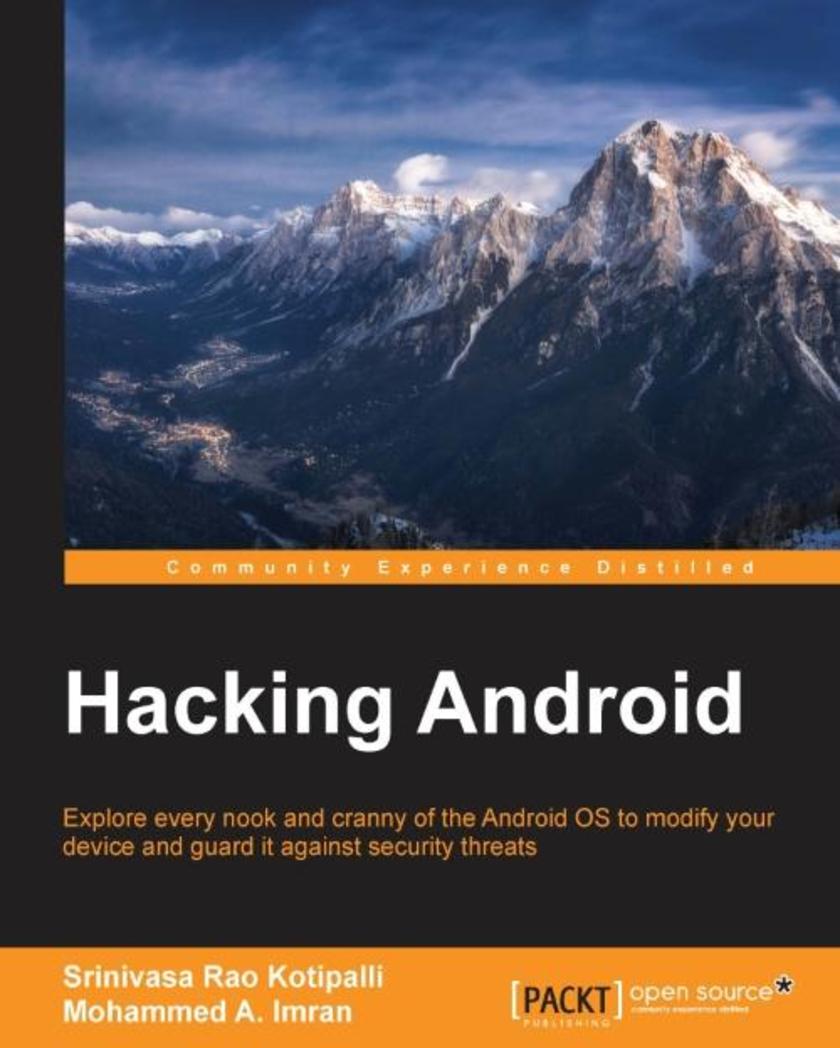
Hacking Android
¥80.65
Explore every nook and cranny of the Android OS to modify your device and guard it against security threats About This Book Understand and counteract against offensive security threats to your applications Maximize your device’s power and potential to suit your needs and curiosity See exactly how your smartphone’s OS is put together (and where the seams are) Who This Book Is For This book is for anyone who wants to learn about Android security. Software developers, QA professionals, and beginner- to intermediate-level security professionals will find this book helpful. Basic knowledge of Android programming would be a plus. What You Will Learn Acquaint yourself with the fundamental building blocks of Android Apps in the right way Pentest Android apps and perform various attacks in the real world using real case studies Take a look at how your personal data can be stolen by malicious attackers Understand the offensive maneuvers that hackers use Discover how to defend against threats Get to know the basic concepts of Android rooting See how developers make mistakes that allow attackers to steal data from phones Grasp ways to secure your Android apps and devices Find out how remote attacks are possible on Android devices In Detail With the mass explosion of Android mobile phones in the world, mobile devices have become an integral part of our everyday lives. Security of Android devices is a broad subject that should be part of our everyday lives to defend against ever-growing smartphone attacks. Everyone, starting with end users all the way up to developers and security professionals should care about android security. Hacking Android is a step-by-step guide that will get you started with Android security. You’ll begin your journey at the absolute basics, and then will slowly gear up to the concepts of Android rooting, application security assessments, malware, infecting APK files, and fuzzing. On this journey you’ll get to grips with various tools and techniques that can be used in your everyday pentests. You’ll gain the skills necessary to perform Android application vulnerability assessment and penetration testing and will create an Android pentesting lab. Style and approach This comprehensive guide takes a step-by-step approach and is explained in a conversational and easy-to-follow style. Each topic is explained sequentially in the process of performing a successful penetration test. We also include detailed explanations as well as screenshots of the basic and advanced concepts.
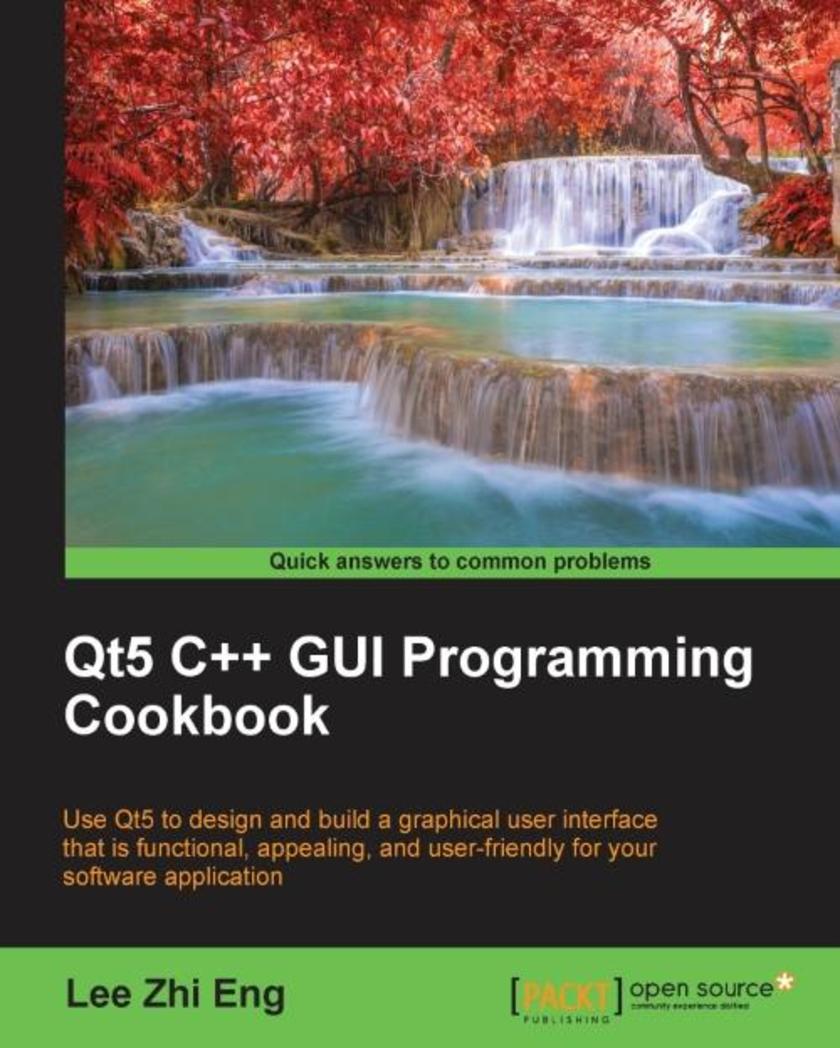
Qt5 C++ GUI Programming Cookbook
¥80.65
Use Qt5 to design and build a graphical user interface that is functional, appealing, and user-friendly for your software application About This Book Learn to make use of Qt5 to design and customize the look-and-feel of your application Improve the visual quality of your application by utilizing the graphic rendering system and animation system provided by Qt5 A good balance of visual presentation and its contents will make an application appealing yet functional Who This Book Is For This book intended for those who want to develop software using Qt5. If you want to improve the visual quality and content presentation of your software application, this book is best suited to you. What You Will Learn Customize the look and feel of your application using the widget editor provided by Qt5 Change the states of the GUI elements to make them appear in a different form Animating the GUI elements using the built-in animation system provided by Qt5 Draw shapes and 2D images in your application using Qt5’s powerful rendering system Draw 3D graphics in your application by implementing OpenGL, an industry-standard graphical library to your project Build a mobile app that supports touch events and export it to your device Parse and extract data from an XML file, then present it on your software’s GUI Display web content on your program and interact with it by calling JavaScript functions from C++, or calling C++ functions from the web content Access to MySQL and SQLite databases to retrieve data and display it on your software’s GUI In Detail With the advancement of computer technology, the software market is exploding with tons of software choices for the user, making their expectations higher in terms of functionality and the look and feel of the application. Therefore, improving the visual quality of your application is vital in order to overcome the market competition and stand out from the crowd. This book will teach you how to develop functional and appealing software using Qt5 through multiple projects that are interesting and fun. This book covers a variety of topics such as look-and-feel customization, GUI animation, graphics rendering, implementing Google Maps, and more. You will learn tons of useful information, and enjoy the process of working on the creative projects provided in this book. Style and approach This book focuses on customizing the look and feel and utilizing the graphical features provided by Qt5. It takes a step-by-step approach, providing tons of screenshots and sample code for you to follow and learn. Each topic is explained sequentially and placed in context.
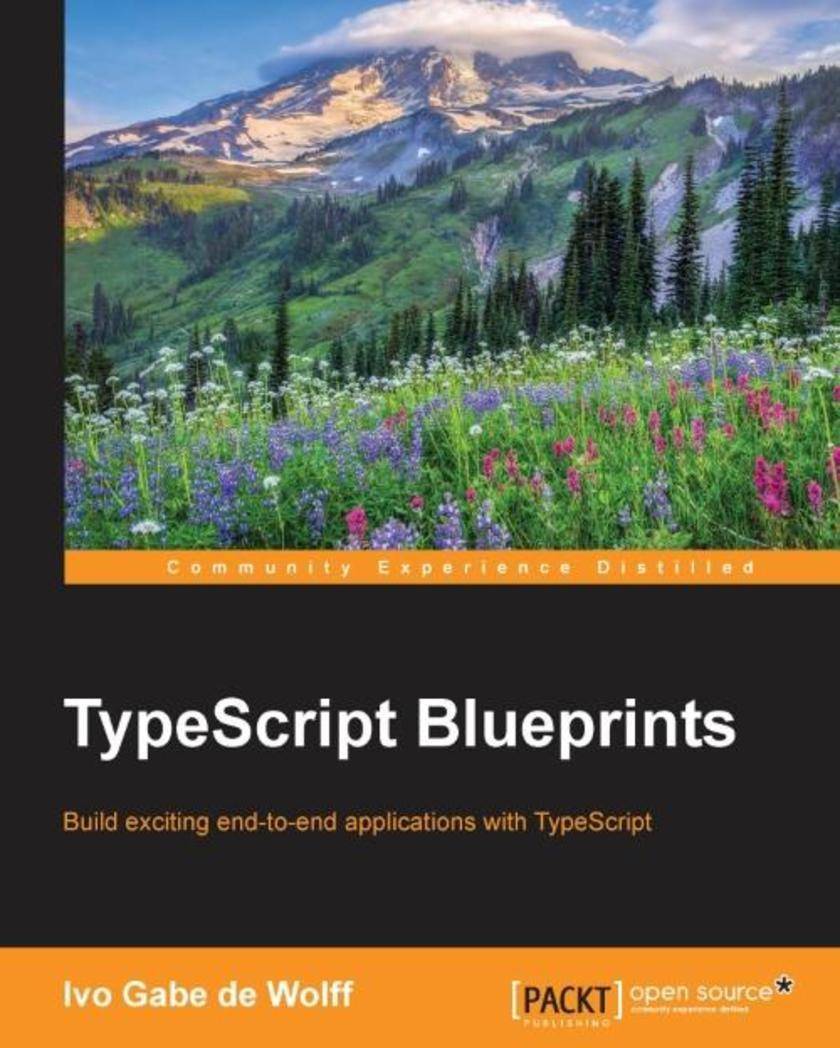
TypeScript Blueprints
¥90.46
Build exciting end-to-end applications with TypeScript About This Book This book will help you whether you’re a beginner or an expert Complete and complex projects provide codes that are ready and solutions for start-ups and enterprise developers The book will showcase the power and depth of TypeScript when it comes to high performance and scalability Who This Book Is For This book was written for web developers who wish to make the most of TypeScript and build fun projects. You should be familiar with the fundamentals of JavaScript What You Will Learn Build quirky and fun projects from scratch while exploring widely applicable practices and techniques Use TypeScript with a range of different technologies such as Angular 2 and React and write cross-platform applications Migrate JavaScript codebases to TypeScript to improve your workflow Write maintainable and reusable code that is helpful in the world of programming revolving around features and bugs Using System.JS and Webpack to load *s and their dependencies. Developing highly performance server-side applications to run within Node Js. Reviewing high performant Node.js patterns and manage garbage collection. In Detail TypeScript is the future of JavaScript. Having been designed for the development of large applications, it is being widely incorporated in popular projects such as Angular JS 2.0. Adopting TypeScript results in more robust software, while still being deployable in apps where regular JavaScript would run. Scale and performance lie at the heart of the projects built in our book. The lessons learned throughout this book will arm you with everything you need to build amazing projects. During the course of this book, you will learn how to build a complete Single Page Application with Angular 2 and create a popular mobile app using NativeScript. Further on, you will build a classic Pac Man game in TypeScript. We will also help you migrate your legacy codebase project from JavaScript to TypeScript. By the end of the book, you will have created a number of exciting projects and will be competent using TypeScript for your live projects. Style and approach The book focuses on building projects from scratch. These end-to-end projects will give you ready-to-implement solutions for your business scenario, showcasing the depth and robustness of TypeScript.
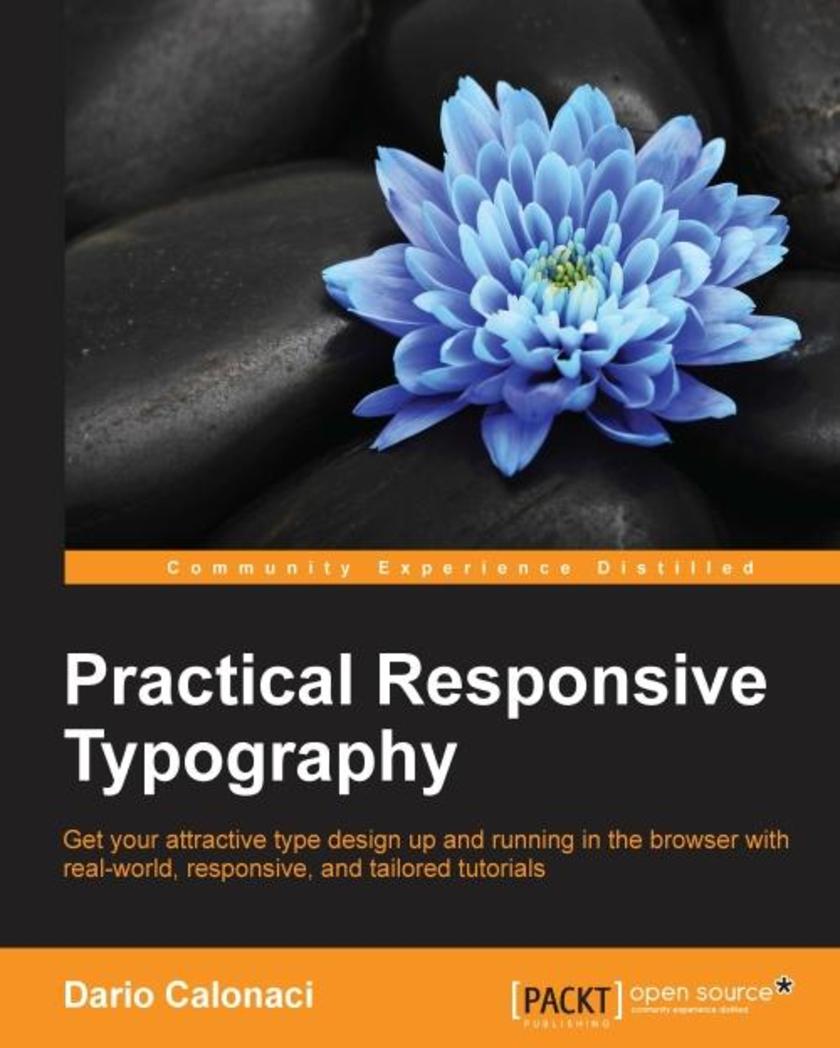
Practical Responsive Typography
¥54.49
Get your attractive type design up and running in the browser with real-world, responsive, and tailored tutorials About This Book No coding experience necessary - get started with responsive typography today! Find out how to customize your own typography designs to truly own your website's identity From the basics to cutting-edge design, this book is the perfect guide Who This Book Is For This book is for web developers familiar with the basics of HTML5 and CSS3 who want to learn how to implement responsive typography. No coding experience is required, so dive in and get started! What You Will Learn Customize and personalize fonts on a responsive website Learn how to write CSS3 rules for viewports Define media queries and write them using CSS3 and HTML5 Implement SASS typography techniques to minimize the CSS output and manage the font variables Get to grips with dropcaps and learn how to use them effectively on the web In Detail Typography is an essential part of any website’s design. It can help you stand out from the crowd, communicate with clarity, and cultivate a distinctive identity. Practical Responsive Typography demonstrates how to use typography to greatest effect. With this book you won't underestimate it's importance - you'll be in complete control over this crucial component of web design. From scaling and optimizing screen spaces to using a range of different web fonts, you'll quickly get up to speed with the practical considerations behind successful typography. But more than the fundamentals, you'll also find out how to go further by customizing typography designs to suit your identity. Style and approach This is an easy-to-follow guide full of real-world examples and tutorials. Each typography style and rule is clearly explained and placed in context.

Mastering NGINX - Second Edition
¥90.46
An in-depth guide to configuring NGINX for your everyday server needs About This Book Get tips, tricks, and master insight to help you configure NGINX for any server situation Integrate NGINX into your applications architecture with is, using hands-on guidance and practical code samples that are free to use Troubleshoot configuration problems before and as they arise, for a seamless NGINX server experience Who This Book Is For This book is for system administrators and engineers who want to personalize NGINX, and design a robust configuration module to solve their hosting problems. Some knowledge of NGINX is a plus, but is not a prerequisite. What You Will Learn Compile the right third-party module to meet your needs Write an authentication server to use with the mail proxy module Create your own SSL certificates to encrypt connections Use try_files to solve your file-existence check problems Cache and compress responses to get speedier user interaction Integrate popular PHP frameworks with the FastCGI module Construct useful logging configurations In Detail NGINX is a high-performance HTTP server and mail proxy designed to use very few system resources. But despite its power it is often a challenge to properly configure NGINX to meet your expectations. Mastering Nginx is the solution – an insider’s guide that will clarify the murky waters of NGINX’s configuration. Tune NGINX for various situations, improve your NGINX experience with some of the more obscure configuration directives, and discover how to design and personalize a configuration to match your needs. To begin with, quickly brush up on installing and setting up the NGINX server on the OS and its integration with third-party modules. From here, move on to explain NGINX's mail proxy module and its authentication, and reverse proxy to solve scaling issues. Then see how to integrate NGINX with your applications to perform tasks. The latter part of the book focuses on working through techniques to solve common web issues and the know-hows using NGINX modules. Finally, we will also explore different configurations that will help you troubleshoot NGINX server and assist with performance tuning. Style and approach This is a mastering guide where you will follow an instructional, conversational approach working through problems and their solutions.
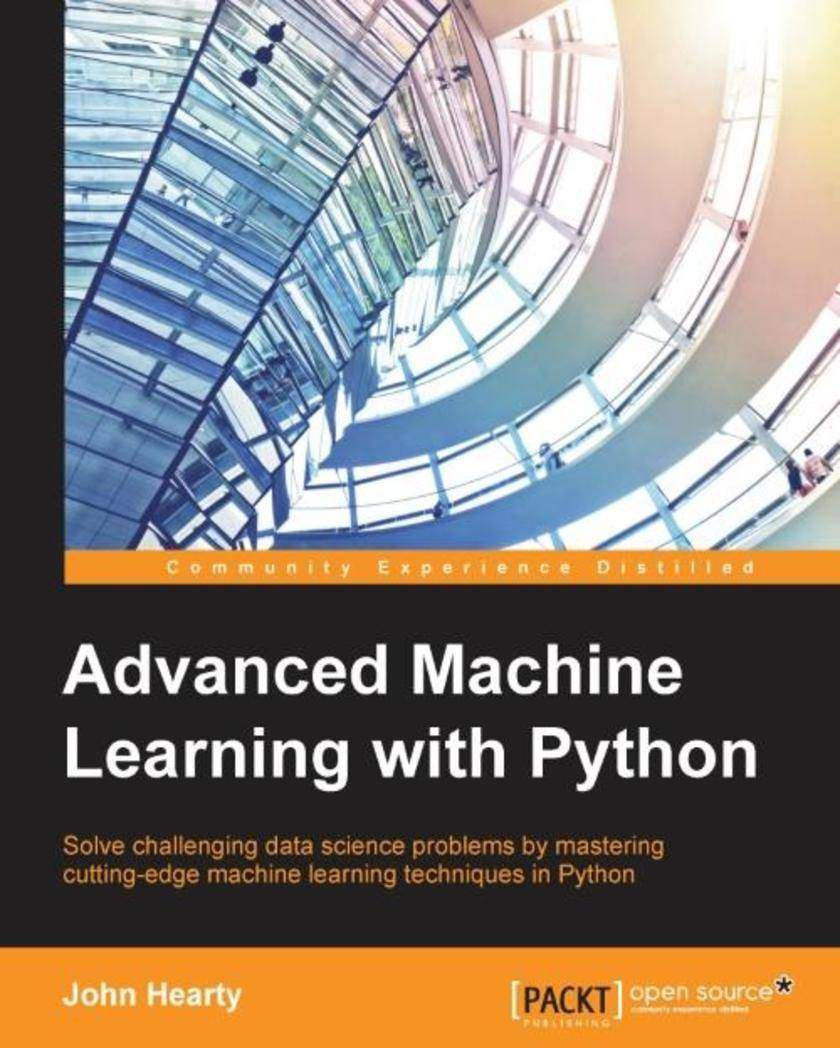
Advanced Machine Learning with Python
¥80.65
Solve challenging data science problems by mastering cutting-edge machine learning techniques in Python About This Book Resolve complex machine learning problems and explore deep learning Learn to use Python code for implementing a range of machine learning algorithms and techniques A practical tutorial that tackles real-world computing problems through a rigorous and effective approach Who This Book Is For This title is for Python developers and analysts or data scientists who are looking to add to their existing skills by accessing some of the most powerful recent trends in data science. If you’ve ever considered building your own image or text-tagging solution, or of entering a Kaggle contest for instance, this book is for you! Prior experience of Python and grounding in some of the core concepts of machine learning would be helpful. What You Will Learn Compete with top data scientists by gaining a practical and theoretical understanding of cutting-edge deep learning algorithms Apply your new found skills to solve real problems, through clearly-explained code for every technique and test Automate large sets of complex data and overcome time-consuming practical challenges Improve the accuracy of models and your existing input data using powerful feature engineering techniques Use multiple learning techniques together to improve the consistency of results Understand the hidden structure of datasets using a range of unsupervised techniques Gain insight into how the experts solve challenging data problems with an effective, iterative, and validation-focused approach Improve the effectiveness of your deep learning models further by using powerful ensembling techniques to strap multiple models together In Detail Designed to take you on a guided tour of the most relevant and powerful machine learning techniques in use today by top data scientists, this book is just what you need to push your Python algorithms to maximum potential. Clear examples and detailed code samples demonstrate deep learning techniques, semi-supervised learning, and more - all whilst working with real-world applications that include image, music, text, and financial data. The machine learning techniques covered in this book are at the forefront of commercial practice. They are applicable now for the first time in contexts such as image recognition, NLP and web search, computational creativity, and commercial/financial data modeling. Deep Learning algorithms and ensembles of models are in use by data scientists at top tech and digital companies, but the skills needed to apply them successfully, while in high demand, are still scarce. This book is designed to take the reader on a guided tour of the most relevant and powerful machine learning techniques. Clear de*ions of how techniques work and detailed code examples demonstrate deep learning techniques, semi-supervised learning and more, in real world applications. We will also learn about NumPy and Theano. By this end of this book, you will learn a set of advanced Machine Learning techniques and acquire a broad set of powerful skills in the area of feature selection & feature engineering. Style and approach This book focuses on clarifying the theory and code behind complex algorithms to make them practical, useable, and well-understood. Each topic is described with real-world applications, providing both broad contextual coverage and detailed guidance.
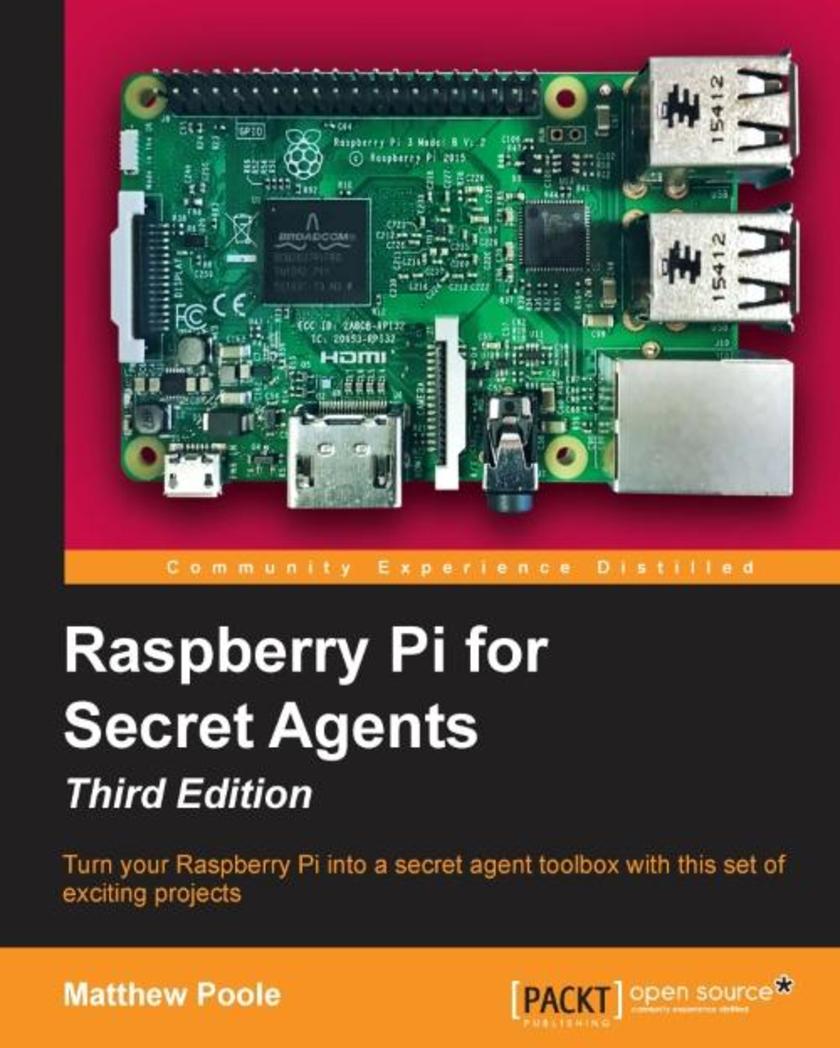
Raspberry Pi for Secret Agents - Third Edition
¥63.21
Turn your Raspberry Pi into a secret agent toolbox with this set of exciting projects About This Book Turn your Raspberry Pi into a multi-purpose secret agent gadget for audio and video surveillance, Wi-Fi exploration, or playing pranks on your friends Detect an intruder on camera or with sensors and set off an alarm or receive messages to your phone Find out what the other computers on your network are up to and make yourself anonymous on the Internet This book has been updated for new additions to your toolkit featuring the tiny, recently released Raspberry Pi Zero board Who This Book Is For This book is for those who are new to the Raspberry Pi Zero ,Raspberry Pi 2 or Raspberry Pi 3 and have some experience with the original Raspberry Pi models, and even for those budding secret agents who would like to use Pi Zero as a secret agent toolbox. No programming experience is assumed. Suitable for the novice and expert alike, each topic provides a fast and easy way to get started with exciting applications, with practical examples in every chapter. What You Will Learn Install and configure the Raspbian Jessie operating system for maximum mischief Detect an intruder with motion detection or a laser trip wire and set off an alarm Listen in to conversations from a distance over Bluetooth Distort your voice in weird and wonderful ways Track the Pi's whereabouts using GPS Connect your Pi to the mobile Internet using a 3G dongle and make yourself anonymous on the net Display secret messages and codes to fellow agents on a LED display In Detail This book is for all mischievous Raspberry Pi owners who’d like to see their computer transform into a neat spy gadget to be used in a series of practical pranks and projects. No previous skills are required to follow along, and if you’re completely new to Linux, you’ll pick up much of the basics for free. We’ll help you set up your Raspberry Pi Zero , Raspberry Pi 2 and Raspberry Pi 3 and guide you through a number of pranks and secret agent techniques that are so inconspicuous yet high on mischief. You’ll learn how to configure your operating system for maximum mischief and start exploring audio, video, or Wi-Fi techniques. We’ll show you how to record, listen, or talk to people from a distance and how to set up your own phone network. Then, you’ll plug in your webcam and set up a motion detector with an alarm and find out what the other computers on your Wi-Fi network are up to. Once you've mastered the techniques, we’ll combine them with a battery pack and GPS for the ultimate off-road spy kit. Style and Approach This easy-to-follow guide is for budding secret agents who want to create tools for mischief, stealth, and reconnaissance. It’s full of fun, practical examples and easy-to-follow recipes, guaranteeing maximum mischief for all skill levels.
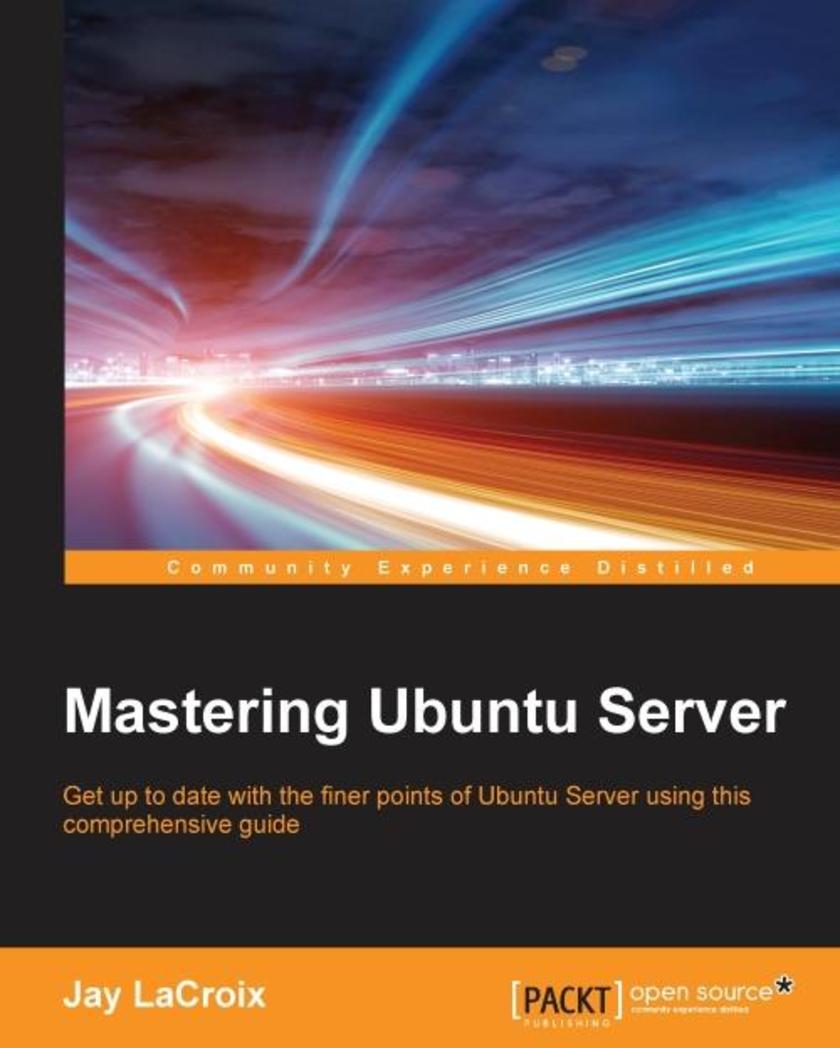
Mastering Ubuntu Server
¥90.46
Get up to date with the finer points of Ubuntu Server using this comprehensive guide About This Book Get well-versed with newly-added features in Ubuntu 16.04 Master the art of installing, managing, and troubleshooting Ubuntu Server A practical easy-to-understand book that will help you enhance your existing skills. Who This Book Is For This book is intended for readers with intermediate or advanced-beginner skills with Linux, who would like to learn all about setting up servers with Ubuntu Server. This book assumes that the reader knows the basics of Linux, such as editing configuration files and running basic commands. What You Will Learn Learn how to manage users, groups, and permissions Encrypt and decrypt disks with Linux Unified Key Setup /Luks Setup SSH for remote access, and connect it to other nodes Understand how to add, remove, and search for packages Use NFS and Samba to share directories with other users Get to know techniques for managing Apache and MariaDB Explore best practices and troubleshooting techniques In Detail Ubuntu is a Debian-based Linux operating system, and has various versions targeted at servers, desktops, phones, tablets and televisions. The Ubuntu Server Edition, also called Ubuntu Server, offers support for several common configurations, and also simplifies common Linux server deployment processes. With this book as their guide, readers will be able to configure and deploy Ubuntu Servers using Ubuntu Server 16.04, with all the skills necessary to manage real servers. The book begins with the concept of user management, group management, as well as file-system permissions. To manage your storage on Ubuntu Server systems, you will learn how to add and format storage and view disk usage. Later, you will also learn how to configure network interfaces, manage IP addresses, deploy Network Manager in order to connect to networks, and manage network interfaces. Furthermore, you will understand how to start and stop services so that you can manage running processes on Linux servers. The book will then demonstrate how to access and share files to or from Ubuntu Servers. You will learn how to create and manage databases using MariaDB and share web content with Apache. To virtualize hosts and applications, you will be shown how to set up KVM/Qemu and Docker and manage virtual machines with virt-manager. Lastly, you will explore best practices and troubleshooting techniques when working with Ubuntu Servers. By the end of the book, you will be an expert Ubuntu Server user well-versed in its advanced concepts. Style and Approach This book is an advanced guide that will show readers how to administer, manage, and deploy Ubuntu server and will also provide expert-level knowledge on advanced security and backup techniques.

Node.js Design Patterns - Second Edition
¥90.46
Get the best out of Node.js by mastering its most powerful components and patterns to create modular and scalable applications with ease About This Book Create reusable patterns and modules by leveraging the new features of Node.js . Understand the asynchronous single thread design of node and grasp all its features and patterns to take advantage of various functions. This unique guide will help you get the most out of Node.js and its ecosystem. Who This Book Is For The book is meant for developers and software architects with a basic working knowledge of JavaScript who are interested in acquiring a deeper understanding of how to design and develop enterprise-level Node.js applications. Basic knowledge of Node.js is also helpful to get the most out of this book. What You Will Learn Design and implement a series of server-side JavaScript patterns so you understand why and when to apply them in different use case scenarios Become comfortable with writing asynchronous code by leveraging constructs such as callbacks, promises, generators and the async-await syntax Identify the most important concerns and apply unique tricks to achieve higher scalability and modularity in your Node.js application Untangle your modules by organizing and connecting them coherently Reuse well-known techniques to solve common design and coding issues Explore the latest trends in Universal JavaScript, learn how to write code that runs on both Node.js and the browser and leverage React and its ecosystem to implement universal applications In Detail Node.js is a massively popular software platform that lets you use JavaScript to easily create scalable server-side applications. It allows you to create efficient code, enabling a more sustainable way of writing software made of only one language across the full stack, along with extreme levels of reusability, pragmatism, simplicity, and collaboration. Node.js is revolutionizing the web and the way people and companies create their software. In this book, we will take you on a journey across various ideas and components, and the challenges you would commonly encounter while designing and developing software using the Node.js platform. You will also discover the "Node.js way" of dealing with design and coding decisions. The book kicks off by exploring the basics of Node.js describing it's asynchronous single-threaded architecture and the main design patterns. It then shows you how to master the asynchronous control flow patterns,and the stream component and it culminates into a detailed list of Node.js implementations of the most common design patterns as well as some specific design patterns that are exclusive to the Node.js world.Lastly, it dives into more advanced concepts such as Universal Java*, and scalability' and it's meant to conclude the journey by giving the reader all the necessary concepts to be able to build an enterprise grade application using Node.js. Style and approach This book takes its intended readers through a comprehensive explanation to create a scalable and efficient real-time server-side apps.




 购物车
购物车 个人中心
个人中心



